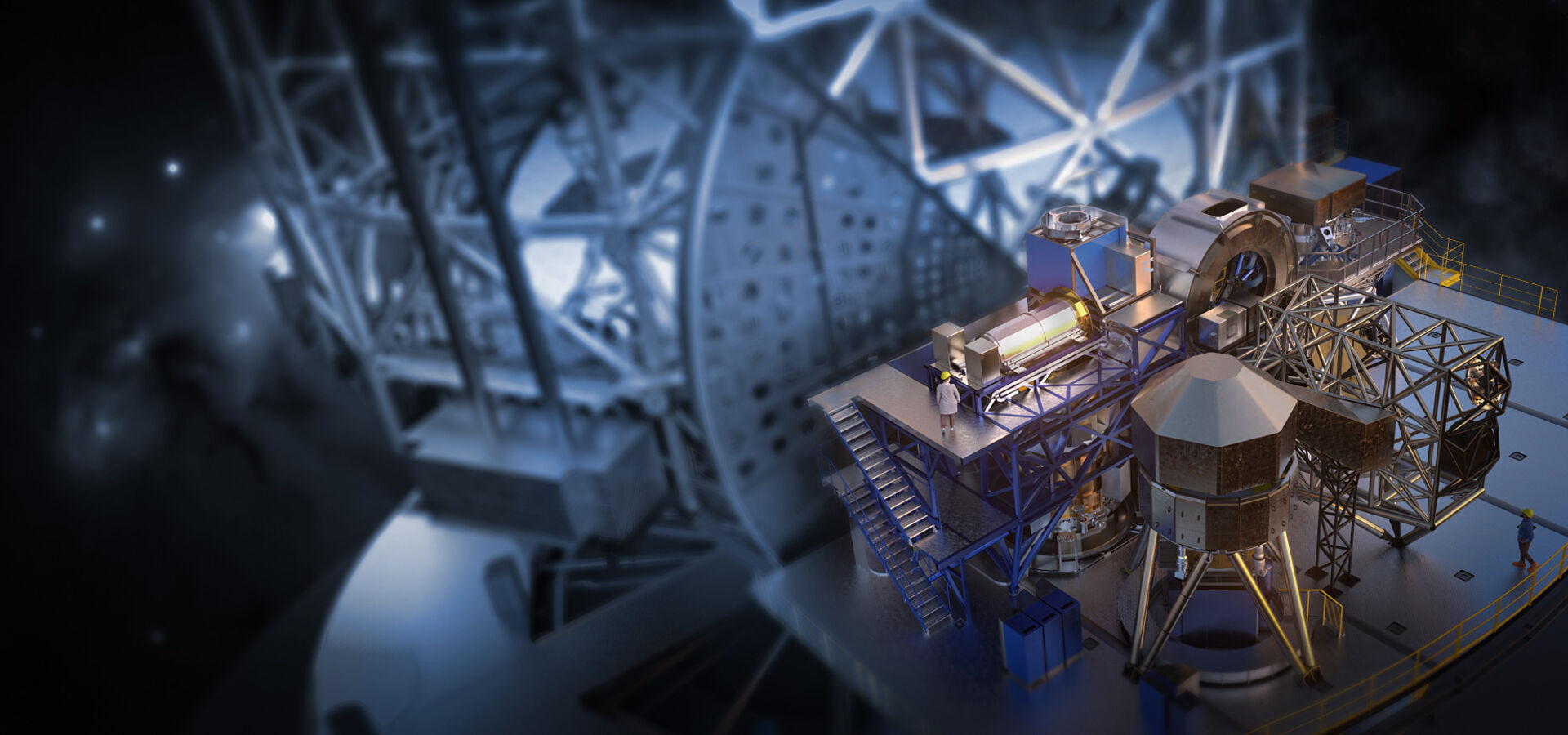
European
Southern
Observatory


As a first-generation ELT instrument, MORFEO (formerly known as MAORY), will help compensate for the distortion of light caused by turbulence in the Earth’s atmosphere which makes astronomical images blurry. MORFEO will not make observations itself; rather, it will enable other instruments, such as MICADO in the first instance, to take exceptional images.
As a first-generation ELT instrument, MORFEO (formerly known as MAORY), will help compensate for the distortion of light caused by turbulence in the Earth’s atmosphere which makes astronomical images blurry. MORFEO will not make observations itself; rather, it will enable other instruments, such as MICADO in the first instance, to take exceptional images.
As a first-generation ELT instrument, MORFEO (formerly known as MAORY), will help compensate for the distortion of light caused by turbulence in the Earth’s atmosphere which makes astronomical images blurry. MORFEO will not make observations itself; rather, it will enable other instruments, such as MICADO in the first instance, to take exceptional images.
Modern ground-based telescopes cannot achieve their full potential without adaptive optics, sophisticated systems that correct for the blurring effects of the Earth’s turbulent atmosphere and allow us to obtain sharp images of astronomical objects near and far. MORFEO is one of the key adaptive optics systems on the ELT. During the first years of operation of the telescope, this instrument will work with near-infrared camera MICADO, moreover MORFEO is designed to also feed light to a second instrument in the future. For scientists to make very precise measurements of the positions, brightness, and motions of stars, MICADO needs stable and sharp images across a large field of view — the adaptive optics provided by MORFEO will help it to achieve this.
MORFEO will use deformable mirrors and other state-of-the-art systems to correct for different layers of turbulence high above the ELT. In particular, it will rely on six laser guide (artificial) stars, projected from around the circumference of the ELT’s primary mirror and arranged in a circle on the sky, that are used as a reference to measure the distortion caused by the Earth’s atmosphere. These lasers will help MORFEO obtain a 3D map of atmospheric turbulence.
MORFEO is a multi-conjugate adaptive optics system: it will not make scientific observations by itself, but will instead enable other instruments to make observations with excellent image quality.
In combination with MICADO, and making full use of the increased light-gathering power of the ELT, MORFEO will help astronomers to observe distant galaxies at approximately redshifts 2-3 in unprecedented detail. This is an important epoch in the history of the Universe as we are looking at the light from galaxies at the time when astronomers believe that most galaxies formed. Additionally, by taking spatially resolved images with ELT, the individual sites of star formation in the galaxies can be measured and their physical characteristics determined.
MORFEO will also enable MICADO to get a closer look at the massive black hole at the centre of the Milky Way than ever before. The black hole affects the orbits of nearby stars; using previous instruments, astronomers have mapped the motions of these stars down to a distance of 25 light days from the black hole, but the MORFEO/MICADO duo will get to a distance of just five light-days.
MORFEO is a multi-conjugate adaptive optics system: it will not make scientific observations by itself, but will instead enable other instruments to make observations with excellent image quality.
MORFEO will use nine guide stars (three real stars and six artificial laser stars), state-of-the-art wavefront sensors, and up to three deformable mirrors to measure and correct for turbulence at three different heights in the atmosphere.
To measure atmospheric turbulence, MORFEO will observe three natural guide stars around the scientific field-of-view of the camera (MICADO) but it will also use the ELT’s laser guide stars to reach the demanding image quality required for MICADO’s ambitious science goals. The distortion of light by atmospheric turbulence will be measured by wavefront sensors using newly developed detectors capable of reading images hundreds of times per second with low noise.
MORFEO uses six large mirrors to deliver light from the focal plane of the telescope to the focal plane of MICADO. By tilting one of those mirrors, it is possible to steer the light beam towards MICADO or the second client instrument. The wavefront sensors for the natural guide stars are physically attached to MICADO to maximise the scientific performance. A dichroic beam splitter in the optical path separates the short wavelength (laser) light into the laser guide star module from the infrared light to the science instruments, and the natural guide star wavefront sensor cameras.
Multi-conjugate AO system
Six laser guide stars and three natural guide stars
Up to two deformable mirrors
in addition to ELT M4 to correct atmospheric turbulence
Two ports for instruments
MICADO and a future spectrograph
Single-conjugate AO
as joint development between MORFEO and MICADO
Performance requirements
50% Strehl ratio at 2.2 μm in the best conditions
30% Strehl ratio at 2.2 μm in the median conditions
Sky coverage
50% at the South Galactic Pole
Tool to predict the exposure time needed to study an object with the instrument, for set environmental conditions
Description of the scientific motivations for the instrument, as initially submitted by the Instrument Consortium
The MORFEO (formerly known as MAORY) project is managed, together with ESO, by an international consortium composed of three research institutes: the Grenoble Institute for Planetary Sciences and Astrophysics (IPAG), France, the National Institute of Astrophysics (INAF), Italy, and the University of Galway, Ireland.
Principal Investigator
Paolo Ciliegi (INAF Osservatorio Astronomico di Bologna, Italy)
Project Scientist
Francesca Annibali (INAF Osservatorio di Bologna, Italy)
Project Manager
Ugo Di Giammatteo (INAF Roma, Italy)
ESO Project Engineer
ESO Project Scientist
ESO Project Manager